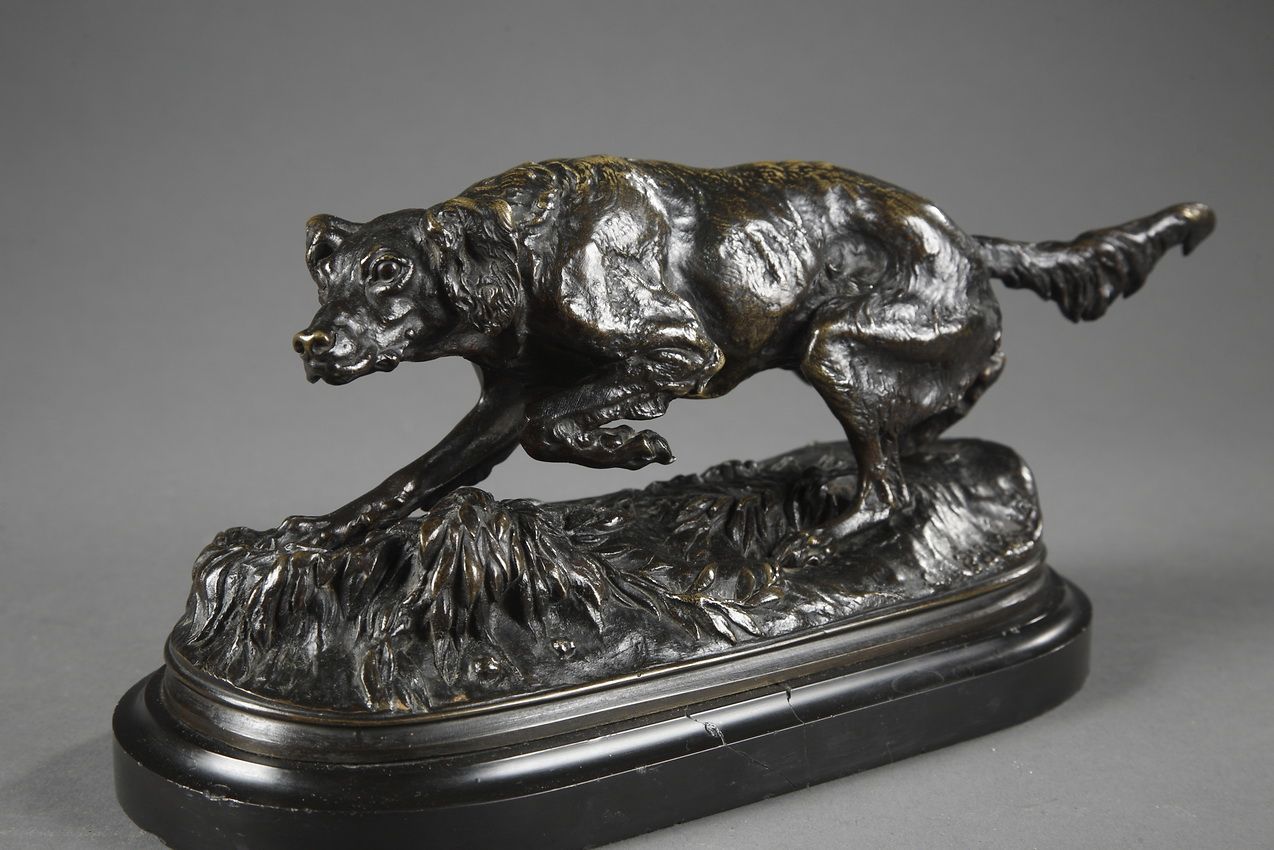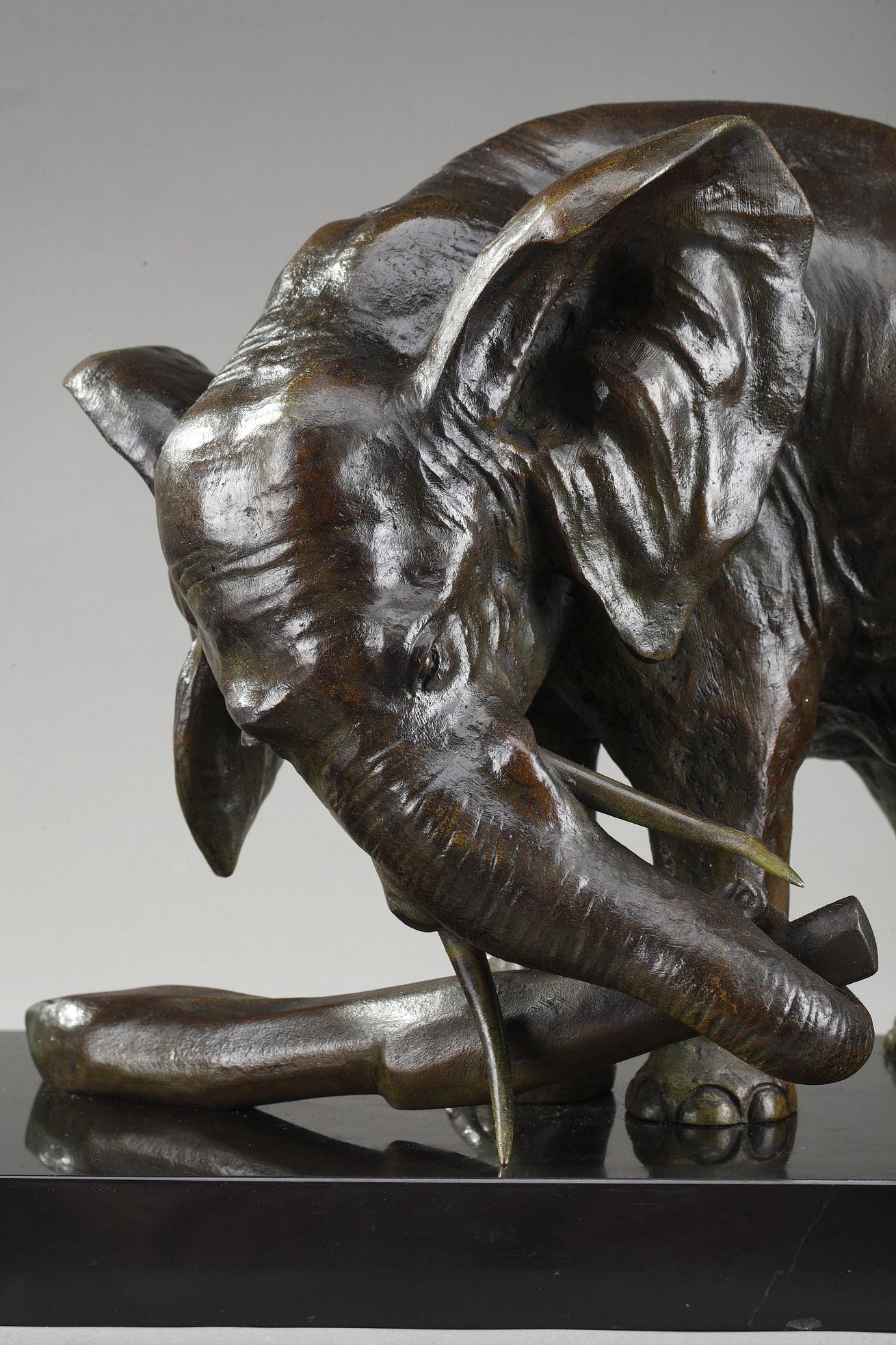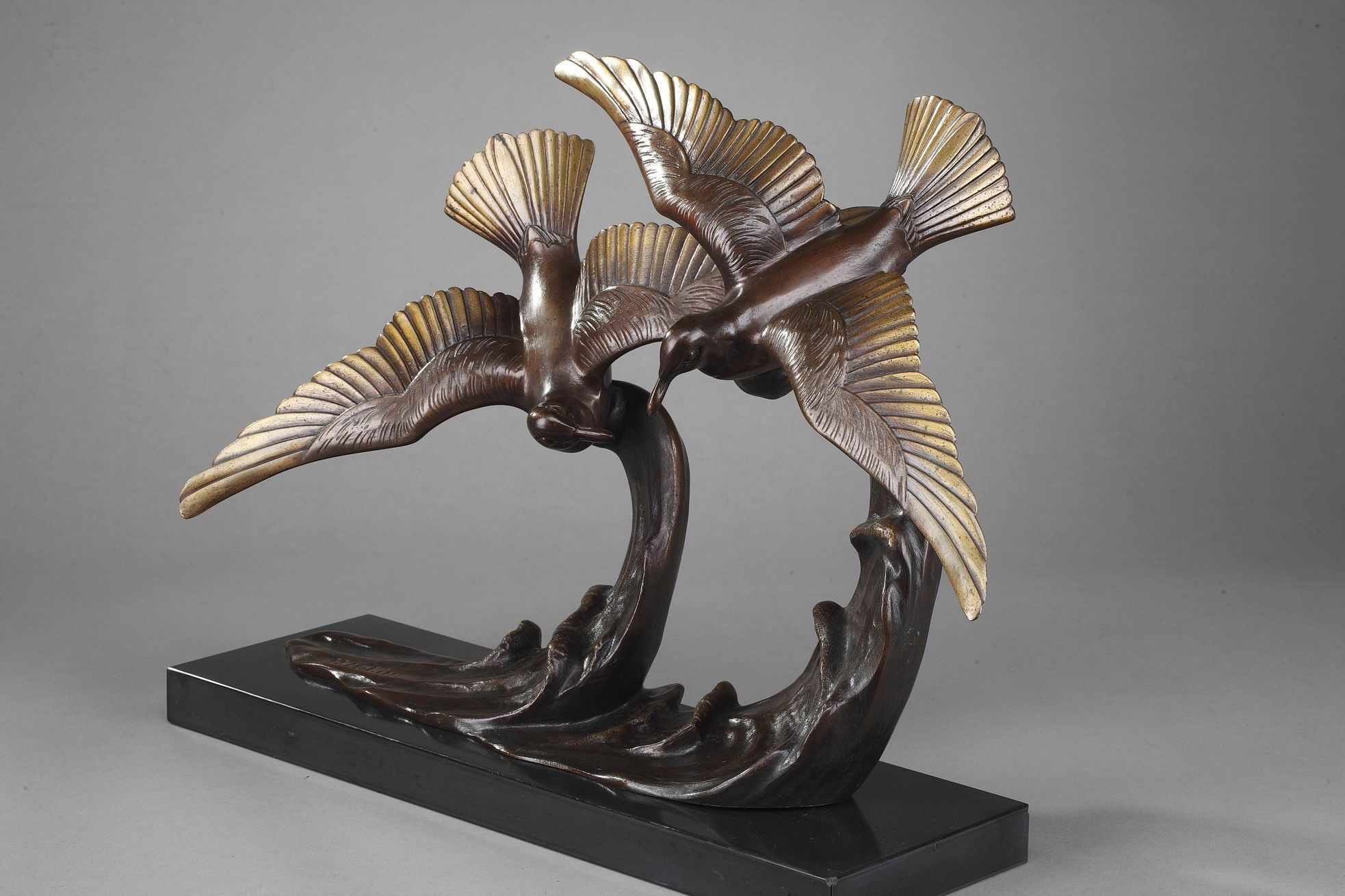A popular genre
The Romantic movement,in addition to its decisive influence on portraiture and the treatment of certain types of subjects, favoured the emergence of a particular genre: animal sculpture.
Animals fascinated the Romantics, representing the natural world with all its violence and presence of the sensory. Animal sculptors continued along a path already opened by English painters and taken up by Géricault, Horace Vernet and the Romantics of the 1820s.
Animal sculptors
Antoine-Louis Barye's work was at the height of the genre and he led many sculptors, such as Alfred Barye, his son, Pierre-Jules Mène and his son-in-law Auguste Cain, known as the lion and tiger statuary, who had made the representation of these wild animals his specialty.
"Dog at a standstill" by Pierre-Jules Mène
Despite the reticence of the academic world, for whom the animal world belonged to the minor arts, the public was full of praise for this production, which clearly influenced the decorative arts.
Antoine-Louis Barye contributed to the creation of goldsmiths' pieces in the animal style. Indeed, Fourier, with whom he began his apprenticeship at the age of fourteen, worked for silversmiths, supplying them with dies for repoussé work.
"The elephant and his calves" by Ulisse Caputo
In this workshop, Barye watched as Napoleon Bonaparte commissioned goldsmith Martin Guillaume Biennais to make snuffboxes for his distinguished guests.
In 1820, Antoine Louis Barye was employed by goldsmith Jaques-Henri Fauconnier, a pupil of Odiot, who was then at the height of his success, enjoying the protection of the Duc d'Angoulême and the Duchesse de Berry.
Antoine-Louis Barye's training and commissions led him to produce numerous goldsmith's and silversmith's pieces, such as inkwells, mantelpieces and candelabras. Animal sculptors such as Antoine-Louis Barye also produced numerous decorative objects.
Art objects with animal decor
Numerous objects of art with animals appeared (storks, turtles, lizards, frogs, etc.) on torches, candelabras or even boxes, each in their own way translating the romantic impulse that swept through Europe in the 19th century.
"Two seagulls on a wave" by Enrique Molins
Bibliography :
- Michel Poletti, Alain Richarme, Barye: catalog raisonnée des sculptures, ed. Gallimard, Paris, 2000
- Charles Saunier, Barye, ed. F Rieder & Cie, Paris, 1925
- Collection complète des bronzes d'art de P-J Mène et de A Cain, sujets de chasse- animaux, ed. Susse Frères, Paris, 1907





